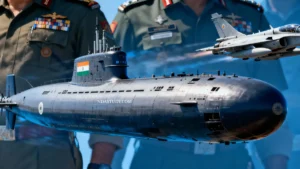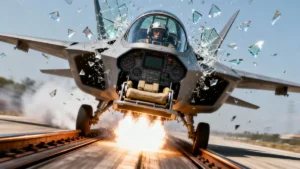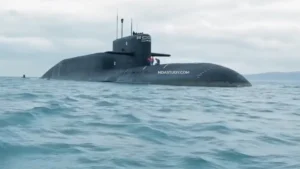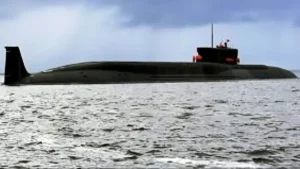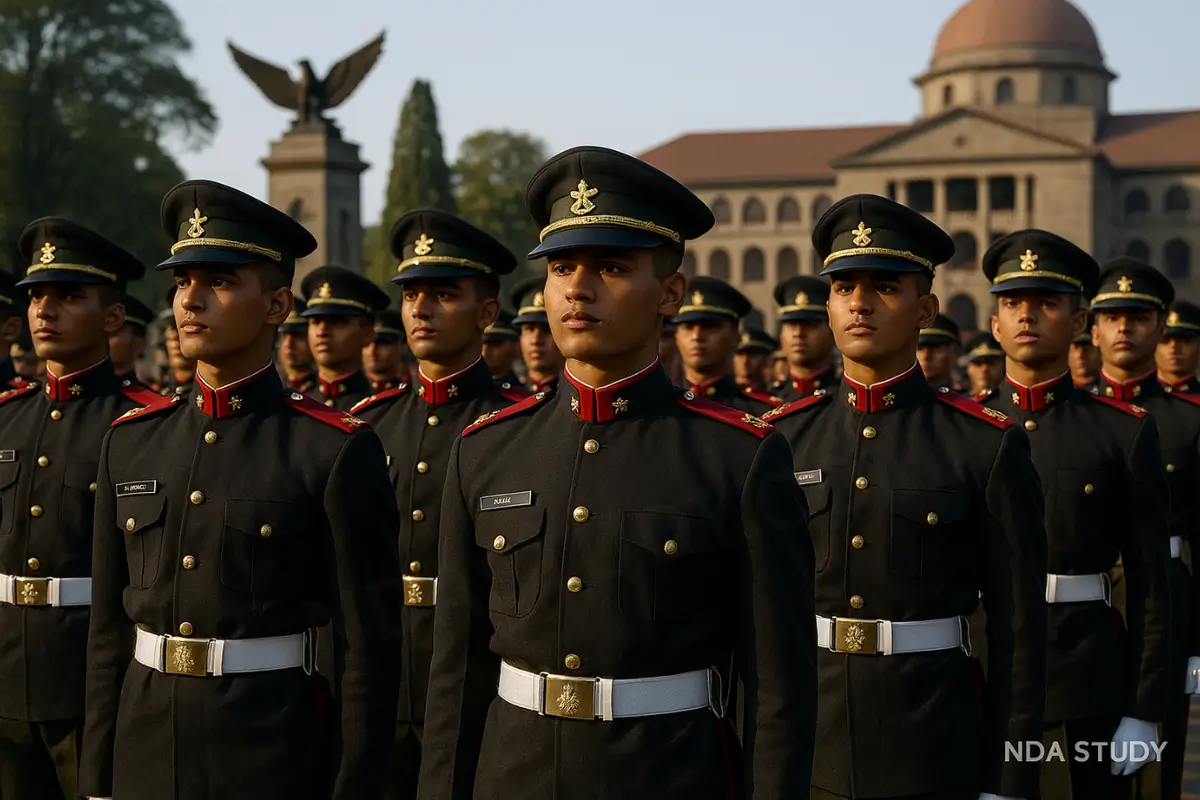India has launched Exercise Trishul 2025, the largest tri-services military drill of the year, deploying over 20,000 troops, Rafale jets, warships, and advanced tanks along the Pakistan border from October 30 to November 10, 2025. This unprecedented show of force comes just months after Operation Sindoor and sends a powerful deterrence message to Islamabad following Defence Minister Rajnath Singh’s stern warning about Sir Creek.
From the scorching deserts of Rajasthan to the tidal marshlands of Sir Creek in Gujarat, India’s Armed Forces are demonstrating unmatched combat readiness through Exercise Trishul 2025. This massive military operation brings together the Indian Army, Navy, and Air Force in one of the most complex joint exercises conducted in recent years. With Pakistan responding nervously by restricting its airspace and placing military commands on high alert, the strategic implications of this drill extend far beyond routine training.
What is Exercise Trishul 2025? – India’s Biggest Military Show of Force
Exercise Trishul 2025 represents India’s commitment to integrated warfare capabilities and operational readiness along the western frontier. Scheduled from October 30 to November 10, 2025, this 12-day tri-services combat exercise is being conducted across multiple challenging terrains, including the creek sectors near Sir Creek, desert regions in Rajasthan, and amphibious operations off the Saurashtra coast in Gujarat.
The scale of this operation is unprecedented. India has issued a Notice to Airmen (NOTAM) restricting airspace up to 28,000 feet across vast swathes of its western border, signalling what satellite imagery analysts have described as an “unusual” level of military activity. Over 20,000 troops are participating, supported by main battle tanks like the T-90 Bhishma and Arjun, K-9 Vajra self-propelled howitzers, BM-21 rocket launchers, attack helicopters, and advanced missile systems.
The exercise derives its name from the ancient weapon “Trishul” (trident), symbolising the three-pronged approach involving all three services. The Indian Air Force component has been code-named “Mahagurjar,” focusing on high-tempo air operations with frontline Rafale and Sukhoi-30MKI fighter jets, IL-78 mid-air refuelers, and Airborne Early Warning and Control (AEW&C) aircraft deployed from multiple air bases.
The Strategic Context: From Pahalgam to Operation Sindoor
Exercise Trishul cannot be understood without examining the events that preceded it. On April 22, 2025, Pakistan-based terrorists launched a devastating attack on Pahalgam in Jammu and Kashmir, killing 26 civilians, including women and children. This massacre triggered Operation Sindoor, India’s most extensive cross-border military action in decades.
From May 7-10, 2025, the Indian Armed Forces conducted precision strikes against nine terror camps deep inside Pakistan and Pakistan-occupied Kashmir, while simultaneously targeting 11 Pakistani airbases and radar installations. The four-day conflict brought the two nuclear-armed neighbours to the brink before a ceasefire was brokered through the DGMO (Director General of Military Operations) hotline, with mediation efforts by US President Donald Trump.
Exercise Trishul 2025 emerges as the logical continuation of India’s deterrence posture established through Operation Sindoor. It validates the operational readiness achieved during Sindoor and demonstrates sustained capability to conduct large-scale military operations at short notice.
Why Sir Creek? Understanding India’s Western Maritime Flashpoint
The geographic focus of Exercise Trishul on the Sir Creek region carries immense strategic significance. Sir Creek is a 96-kilometre tidal estuary between Gujarat’s Rann of Kutch and Pakistan’s Sindh province, representing one of the most contentious territorial disputes between India and Pakistan.
The Strategic Value of Sir Creek
Maritime Dominance: Control over Sir Creek determines the maritime boundary in the Arabian Sea, directly impacting the Exclusive Economic Zone (EEZ) claims of both nations. This affects access to potential oil and gas reserves and some of Asia’s richest fishing grounds.
Access to Karachi: The Sir Creek-Sindh-Karachi axis represents Pakistan’s economic jugular. Karachi handles approximately 95% of Pakistan’s seaborne trade and hosts critical naval assets. Military planners recognise that effective operations in Sir Creek could strategically isolate Karachi and disrupt Pakistan’s maritime trade and energy supply routes.
Security Vulnerability: The creek’s complex network of tidal channels has historically been used for infiltration. The 2008 Mumbai terror attacks saw terrorists use the maritime route through areas near Sir Creek, demonstrating the security implications of this porous border region.
Infrastructure Development: Recent intelligence inputs indicate Pakistan has intensified construction of military infrastructure in the Sir Creek area, including forward observation posts, hovercraft facilities, and improved coastal defenses. Pakistan Navy Chief Admiral Naveed Ashraf personally visited forward posts in Sir Creek on October 24-25, 2025, inducting three new 2400 TD hovercrafts into the Pakistan Marines and declaring the Navy “ready to defend every inch from Sir Creek to Jiwani.”
Rajnath Singh’s Stern Warning
Defence Minister Rajnath Singh delivered a powerful message while addressing troops at the Indian Air Force base in Bhuj on Dussehra. Warning Pakistan against any “misadventure” in the Sir Creek sector, Singh declared: “If Pakistan dares to act in the Sir Creek sector, the reply will be so strong that it will change both history and geography.”
This unusually blunt language reflects India’s growing confidence in its military capabilities and willingness to respond decisively to any Pakistani provocation. The statement also signals that Sir Creek, long relegated to diplomatic negotiations, is now firmly recognized as a potential military flashpoint requiring operational preparedness.
Exercise Trishul in Action: What’s Happening on the Ground
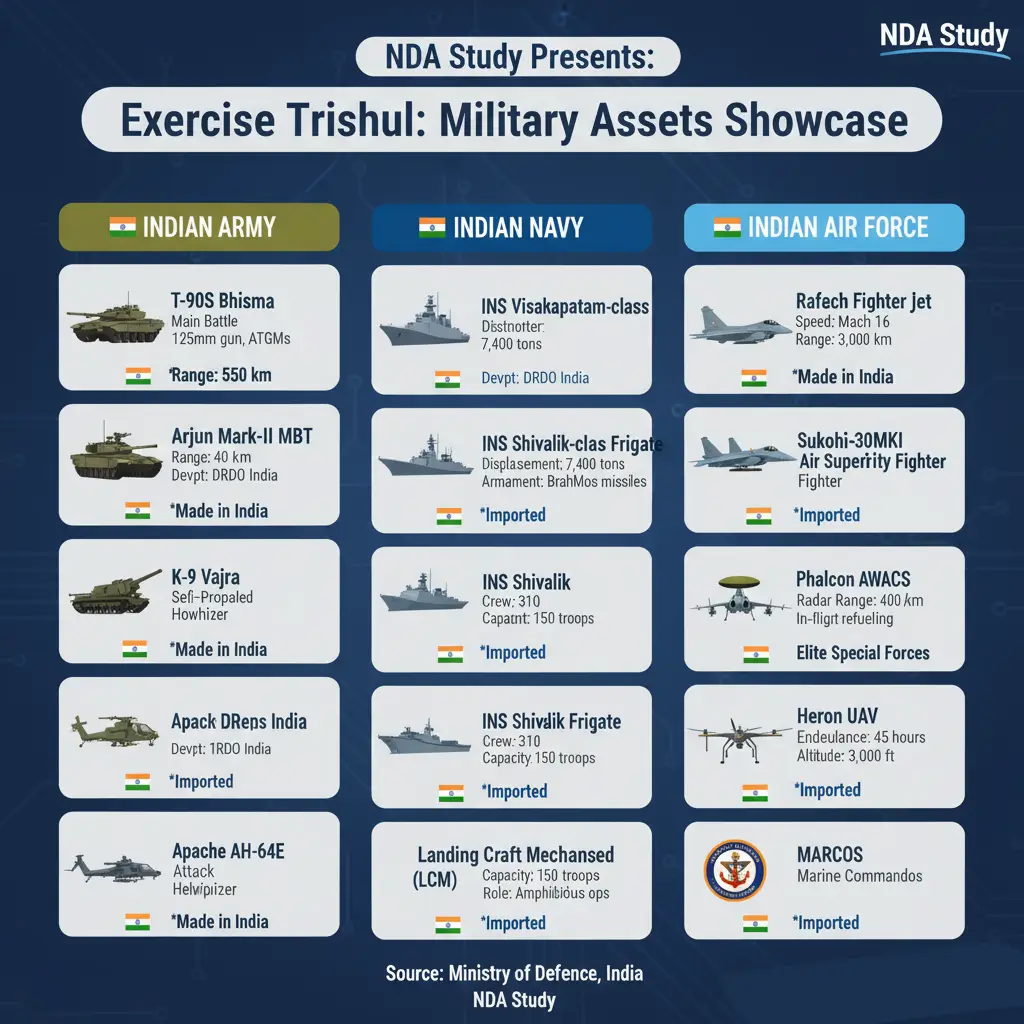
Desert Warfare: 21 Sudarshan Chakra Corps Takes Center Stage
The Bhopal-based 21 Corps, popularly known as Sudarshan Chakra Corps, forms the backbone of Exercise Trishul’s ground operations. As one of India’s three offensive strike corps, the 21 Corps specializes in rapid mobilization and deep penetration operations in desert terrain.
In the Jaisalmer-Barmer sector of Rajasthan, armoured formations featuring T-90S Bhishma and Arjun Mark-II main battle tanks are conducting combined arms manoeuvres alongside mechanized infantry. These operations test the corps’ ability to execute blitzkrieg-style offensive thrusts – the cornerstone of India’s Cold Start or Pro-Active doctrine.
Artillery units are demonstrating firepower with K-9 Vajra 155mm self-propelled howitzers and BM-21 Grad multi-barrel rocket launchers, creating overwhelming fire support for advancing armor. Attack helicopters including Apache AH-64E and Rudra advanced light helicopters provide close air support and anti-tank capabilities.
Exercise Trinetra: Electromagnetic Warfare and Counter-Drone Operations
A specialized component called Exercise Trinetra focuses on cutting-edge “full-cycle electromagnetic spectrum operations and counter-unmanned aerial system kill-chains.” This drill addresses the evolving threat of drone warfare, which has transformed modern battlefields from Ukraine to the Middle East.
The Agnibaaz Division (41 Artillery Division) of the Sudarshan Chakra Corps is conducting Exercise Agni Drishti, demonstrating theater-level integration of land, air, space, and unmanned Intelligence, Surveillance, and Reconnaissance (ISR) assets into a unified, network-centric sensor-to-shooter grid. This creates a seamless kill-chain where targets identified by drones, satellites, or ground sensors can be immediately engaged by the most appropriate weapon system.
Counter-drone capabilities being tested include the indigenous D-4 Counter-UAS systems, electronic warfare jammers, and laser-based directed energy weapons. These technologies are critical as Pakistan has increasingly deployed Chinese-made drones along the border for surveillance and potential strike operations.
Amphibious Operations: Navy’s Saurashtra Coast Landings
The Indian Navy is conducting extensive amphibious operations off the Saurashtra coast in Gujarat, rehearsing scenarios for establishing beachheads in contested littoral environments. This component draws on lessons from AMPHEX 2025, the large-scale amphibious exercise concluded in Karwar in January 2025.
Naval assets including frigates like INS Shivalik-class and destroyers such as INS Visakhapatnam-class are providing offshore fire support and area air defense. Amphibious warfare ships similar to INS Jalashwa are deploying Landing Craft Mechanised (LCM) and Landing Craft Assault (LCA) to transport troops and BMP Infantry Fighting Vehicles (IFVs) to shore.
The elite Marine Commandos (MARCOS) are executing specialized operations including bunker-busting drills, combat free-fall insertions, and clandestine beach reconnaissance. These operations are particularly relevant to Sir Creek’s tidal creek environment, where specialized amphibious warfare capabilities are essential.
Air Dominance: IAF’s Mahagurjar High-Tempo Operations
The Indian Air Force’s Mahagurjar operations represent the aerial backbone of Exercise Trishul. Multiple air bases in Gujarat and Rajasthan are conducting round-the-clock sorties to establish air superiority, provide close air support, and demonstrate strategic strike capabilities.
Rafale fighter jets from Hasimara and Ambala are showcasing precision strike capabilities with SCALP cruise missiles and HAMMER guided bombs. These fourth-generation+ fighters bring a technological edge with their advanced AESA radars and low observability features.
Sukhoi-30MKI fighters, the backbone of IAF’s air superiority fleet, are conducting long-range missions enabled by IL-78 mid-air refueling tankers. These operations validate India’s ability to sustain high-tempo air operations deep into enemy territory.
Airborne Early Warning and Control (AEW&C) aircraft like DRDO Netra and Phalcon AWACS provide comprehensive situational awareness, coordinating fighter operations and monitoring enemy airspace. Unmanned Aerial Vehicles (UAVs) including Heron and indigenous TAPAS drones conduct persistent ISR missions, feeding real-time intelligence to ground and air commanders.
The IAF has also deployed Mirage 2000 fighters equipped with Spice-2000 precision-guided munitions – the same weapon system used successfully in the 2019 Balakot strikes. This sends a clear message about India’s precision strike capability against hardened targets.
Exercise Sudarshan Vayu Sanchar: Integrated Air Defence
A parallel drill called Exercise Sudarshan Vayu Sanchar is testing integrated air defence coordination between Army air defence units and IAF assets. This validates the concept of “air defence bubbles” protecting advancing ground forces from enemy air attacks.
Indigenous Akash surface-to-air missile systems, which successfully shot down Pakistani JF-17 fighters during Operation Sindoor, are being deployed alongside longer-range S-400 Triumf systems and short-range OSA-AK and Strela missiles, creating a multi-layered air defense network.
Pakistan’s Nervous Response: Airspace Lockdown and Military Alert
Pakistan’s reaction to Exercise Trishul reveals the psychological impact of India’s military posturing. On October 28-29, 2025, Pakistan issued its own NOTAM restricting multiple air traffic routes across central and southern airspace, though officials in Islamabad provided no official explanation for these restrictions.
Defence analysts believe Pakistan’s airspace closure was likely for a military exercise or weapons test, but the timing – just two days before India’s drill – suggests a direct response to Exercise Trishul. Such parallel notifications have become routine since Operation Sindoor, with both countries regularly issuing NOTAMs to secure airspace during major military activities.
Pakistan’s High Alert Status
According to reports from CNN-News18, multiple Pakistani military commands and bases have been placed on high alert in response to India’s tri-services exercise. Sources described elements of Pakistan’s military establishment as being “in panic” over potential contingency scenarios, particularly given Exercise Trishul’s focus on the Sir Creek-Sindh-Karachi axis.
The Sir Creek-Badin-Karachi belt represents one of Pakistan’s weakest military sectors. Pakistan’s military forces are primarily concentrated along the Sialkot-Lahore axis in Punjab (facing India’s Western Command) and in the mountainous regions of Khyber Pakhtunkhwa. The southern Sindh coast has historically received less attention and infrastructure investment.
Pakistani Air Force and Navy units have increased patrols in the Arabian Sea, while ground forces in Sindh province have been reinforced. This defensive posturing contrasts with the more aggressive rhetoric from Pakistan Navy Chief Admiral Naveed Ashraf, whose visit to Sir Creek was clearly timed as a counter-display to India’s military preparations.
The CPEC Connection
Pakistan’s heightened sensitivity about Sir Creek also relates to the China-Pakistan Economic Corridor (CPEC). The port city of Gwadar, approximately 300 kilometers west of Karachi, represents China’s strategic gateway to the Arabian Sea and Indian Ocean. Any instability in Pakistan’s southern maritime regions could jeopardise Chinese investments and strategic interests, potentially bringing China more directly into the India-Pakistan equation.
Atmanirbhar Bharat in Action: Indigenous Defence Systems Showcase
Exercise Trishul 2025 serves as a powerful demonstration of Prime Minister Narendra Modi’s JAI vision – Jointness, Atmanirbharta (self-reliance), and Innovation. The exercise prominently features indigenous weapons systems developed by India’s defense industry, marking a strategic shift from import dependence to export potential.
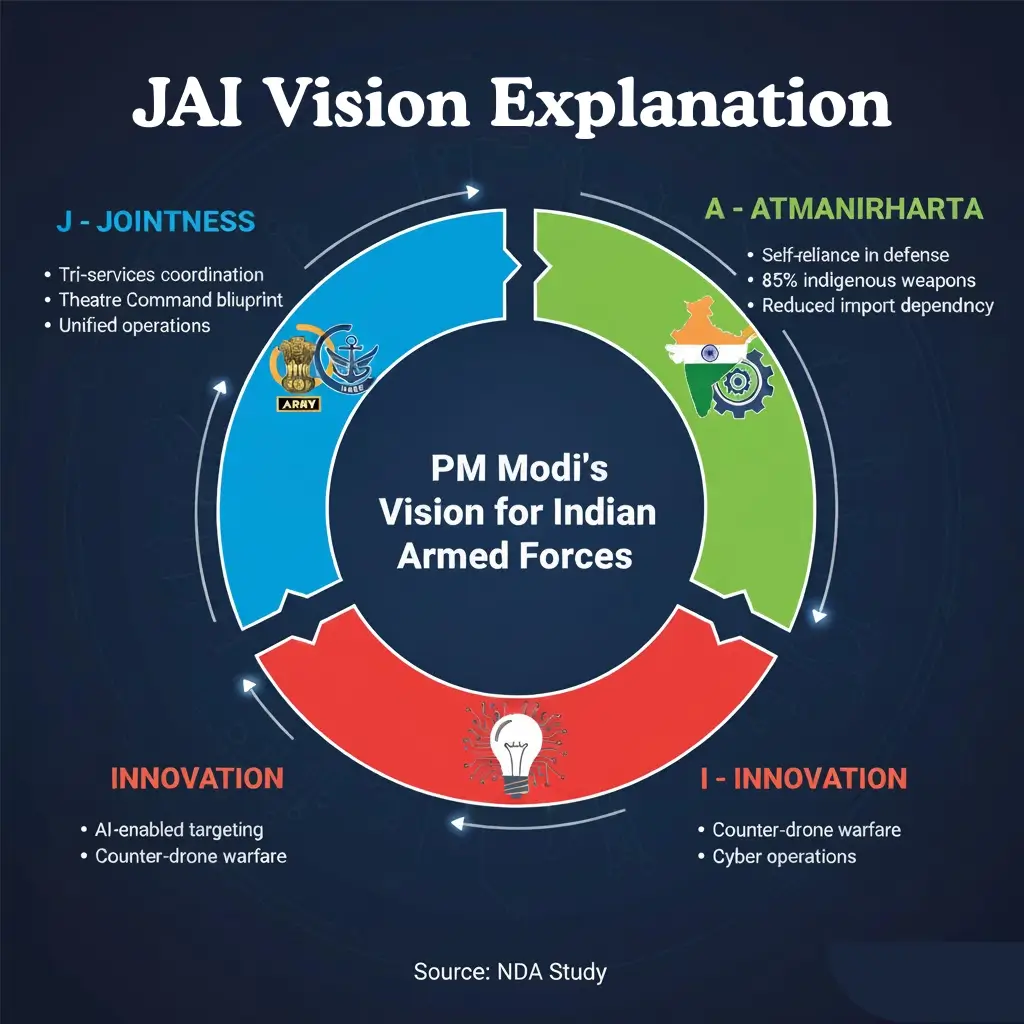
Indigenous Systems Being Tested
Akash Air Defense Missiles: The Akash surface-to-air missile system, developed by DRDO, is India’s answer to medium-range air defense needs. With a range of 30-35 kilometers and capability to engage targets up to 18,000 meters altitude, Akash systems proved their combat effectiveness during Operation Sindoor by successfully intercepting Pakistani JF-17 fighters. The advanced Akash Prime variant being tested in Exercise Trishul features an indigenous radio frequency seeker and enhanced accuracy.
BrahMos Cruise Missiles: The BrahMos supersonic cruise missile, developed jointly with Russia but with increasing indigenous content, represents India’s most potent precision strike weapon. Land-attack variants of BrahMos were used extensively during Operation Sindoor to destroy hardened terror infrastructure. The missile’s Mach 2.8 speed makes it virtually impossible to intercept with current Pakistani air defense systems.
Nagastra-I Loitering Munitions: These man-portable kamikaze drones, developed by Solar Industries and DRDO, provide precision strike capability at the tactical level. With a 30-minute endurance and GPS-guided accuracy, Nagastra-I systems allow infantry units to engage targets beyond line-of-sight without requiring artillery or air support.
Akashteer Air Defense Control System: This indigenous air defense battle management system integrates sensors and weapon systems into a networked command-and-control architecture, enabling coordinated engagement of multiple aerial threats.
DRDO Netra AEW&C: India’s indigenously developed airborne early warning aircraft, based on Embraer ERJ-145 platform, provides critical airspace surveillance capability independent of foreign systems.
Advanced Light Helicopters: The HAL-designed Rudra and Prachand attack helicopters are seeing extensive deployment in Exercise Trishul, validating their desert warfare capabilities.
The Atmanirbhar Success Story
India’s defense production has witnessed remarkable growth in recent years. According to government data, defense production increased by 174% between 2014-15 and 2023-24. Defense exports have grown exponentially, crossing ₹21,000 crore (approximately $2.5 billion) in 2023-24.
The success of indigenous systems during Operation Sindoor – where 98% of weapons used were Made in India – has boosted confidence in domestic defense manufacturing. Exercise Trishul provides a comprehensive testing ground for these systems under realistic operational conditions, identifying areas for improvement and validating tactical employment doctrines.
This focus on self-reliance carries strategic implications beyond economics. Atmanirbharta reduces dependency on foreign suppliers who might restrict weapons exports during conflict (as seen when several countries imposed embargoes during past India-Pakistan conflicts). It also enables customization of weapons systems to Indian operational requirements and terrain.
Exercise Trishul vs. Past Military Drills: How Does It Compare?
To understand Exercise Trishul’s significance, it’s helpful to compare it with previous large-scale Indian military exercises:
Comparison with Major Indian Military Drills
AMPHEX 2025 (January 2025): Conducted in the Andaman & Nicobar Islands, AMPHEX 2025 focused specifically on amphibious warfare with approximately 5,000 troops over five days. While smaller in scale than Trishul, AMPHEX validated tri-services coordination in littoral operations, lessons from which are being applied in Trishul’s Saurashtra coast operations.
Sindu Sudarshan Series (2011-2019): These recurring exercises by the 21 Sudarshan Chakra Corps in Rajasthan’s Thar Desert involved 40,000-60,000 troops and tested offensive operations in desert terrain. Exercise Trishul essentially represents Sindu Sudarshan’s evolution into a full tri-services exercise with enhanced jointness and amphibious components.
Gagan Shakti (2018): This IAF-centric exercise demonstrated air power projection with over 11,000 sorties across the country, validating the Air Force’s ability to conduct sustained high-tempo operations on both western and eastern fronts simultaneously. Trishul’s Mahagurjar component draws on Gagan Shakti’s operational concepts but integrates them more closely with ground and naval operations.
Vijay Prahar (2018): Conducted by the Jodhpur-based 12 Corps (Desert Corps) with approximately 20,000 troops in Rajasthan, Vijay Prahar tested rapid mobilisation and offensive operations. Exercise Trishul matches its scale but adds significant naval and amphibious dimensions absent in Vijay Prahar.
What Makes Trishul Different?
Geographic Scope: Unlike previous exercises focused on either desert sectors or amphibious operations, Trishul simultaneously encompasses creek sectors (Sir Creek), desert terrain (Rajasthan), and coastal operations (Saurashtra), testing the ability to conduct multi-front operations.
Electromagnetic Warfare Focus: The emphasis on Exercise Trinetra’s electromagnetic spectrum operations and counter-drone warfare reflects evolving 21st-century battlefield requirements largely absent from earlier exercises.
Post-Sindoor Context: Exercise Trishul occurs in the aftermath of actual combat operations during Operation Sindoor, lending it operational validation urgency beyond routine peacetime exercises.
JAI Integration: The deliberate showcasing of jointness, indigenous systems, and innovative tactics represents a conceptual evolution from earlier exercises that were more equipment-focused.
Strategic Messaging: The political and strategic messaging component – particularly regarding Sir Creek following Rajnath Singh’s warning – adds dimensions beyond pure military training.
Expert Analysis: What Exercise Trishul Signals to Pakistan
Military analysts point to several strategic messages embedded in Exercise Trishul 2025:
“Exercise Trishul demonstrates India’s operational readiness months after Operation Sindoor – this is sustained capability, not one-time mobilization.”
— Senior Military Officer & Member of NDA Study (anonymous)
Attribution: “
Validation of Cold Start Doctrine
India’s Cold Start (or Pro-Active) doctrine, developed after the 2001-02 Operation Parakram mobilization crisis, envisions rapid military operations against Pakistan within 48-72 hours of a terror attack, before international pressure can force de-escalation. Operation Sindoor largely validated this concept, with forces mobilizing and striking within days of the Pahalgam attack.
Exercise Trishul tests the sustainability of this capability. Can India maintain high operational readiness even months after Operation Sindoor? Can forces that stood down after May 2025 be rapidly re-mobilised? The exercise answers these questions affirmatively, demonstrating that India’s Cold Start capability is not a one-time achievement but a sustained military posture.
Testing Integrated Battle Groups (IBGs)
The Indian Army is restructuring from division-heavy formations into smaller, more agile Integrated Battle Groups optimized for rapid offensive operations. IBGs typically comprise 5,000-8,000 troops with organic armor, mechanized infantry, artillery, air defense, and engineering assets, capable of independent operations without requiring corps-level support.
Exercise Trishul provides a testing ground for IBG concepts within the 21 Corps structure. The emphasis on network-centric warfare (Exercise Agni Drishti) and seamless tri-services coordination reflects the integrated, joint operations philosophy underlying IBG doctrine.
Demonstrating Theatre Command Readiness
India is transitioning toward Theatre Commands – unified structures combining Army, Navy, and Air Force assets under single operational commanders. While formal Theatre Commands haven’t been established (due to inter-service differences on command structures), Exercise Trishul serves as a prototype for how a Western Theatre Command might operate.
The Pune-based Southern Command’s leadership of tri-services operations involving IAF and Navy assets demonstrates practical jointness that will characterise future Theatre Commands. Exercise Trishul essentially previews India’s future military organisational structure.
Deterrence Through Transparency
Unlike the secrecy surrounding Operation Sindoor until after its execution, Exercise Trishul has been publicly announced with extensive media coverage. This transparency serves a deterrence function – ensuring Pakistan fully understands Indian capabilities and operational readiness, thereby discouraging adventurism.
The publicised involvement of Rafales, BrahMos missiles, and advanced indigenous systems sends a clear message: India possesses both the hardware and the operational expertise to inflict severe damage on Pakistan’s military and terror infrastructure. The hope is that this demonstration makes actual use of these capabilities unnecessary.
Sir Creek as the New Flashpoint
By focusing Exercise Trishul on the Sir Creek-Sindh-Karachi axis rather than the traditional Punjab-Rajasthan sectors, India signals strategic flexibility. Pakistan’s military has historically focused on defending Lahore and Sialkot, viewing these as likely invasion routes. By emphasizing Sir Creek, India forces Pakistan to divert resources to southern defenses, stretching its military thin.
“If Pakistan dares to act in the Sir Creek sector, the reply will be so strong that it will change both history and geography.”
— Defence Minister Rajnath Singh, Dussehra 2025, Bhuj”
Attribution: “
The implicit threat to Karachi – Pakistan’s economic heart – creates strategic leverage. Pakistan cannot afford to lose Karachi or have its maritime trade disrupted, yet defending this extensive coastline against Indian naval and amphibious forces requires capabilities Pakistan currently lacks.
International Implications: What the World is Watching
Exercise Trishul carries implications beyond the India-Pakistan bilateral relationship, attracting attention from major powers and regional actors.
United States: Balancing Act
The United States maintains complex relationships with both India and Pakistan. Washington views India as a critical partner in the Indo-Pacific strategy to balance China, with the two countries sharing intelligence and conducting joint military exercises. However, the US also maintains strategic ties with Pakistan, particularly for counterterrorism cooperation in Afghanistan and Central Asia.
During the May 2025 India-Pakistan crisis following Operation Sindoor, US President Donald Trump personally intervened to facilitate the DGMO hotline ceasefire. American officials have urged restraint from both sides while privately supporting India’s right to self-defense against terrorism.
The timing of Exercise Trishul, during the final months of 2025, coincides with US election preparations, potentially reducing American bandwidth for South Asian crisis management. India’s confidence in conducting such large-scale exercises despite potential US concern about escalation reflects New Delhi’s growing strategic autonomy.
China: The Silent Partner
China’s reaction to Exercise Trishul has been notably muted in official statements, but Beijing is undoubtedly watching closely. As Pakistan’s “all-weather friend,” China has historically provided diplomatic, economic, and military support to Islamabad in its disputes with India.
However, China’s strategic calculus is complex. On one hand, Chinese military planners study Indian operational concepts and force employment for insights applicable to potential Sino-Indian border scenarios. On the other hand, any India-Pakistan conflict risks destabilizing the China-Pakistan Economic Corridor and threatening Chinese investments in Gwadar and other Pakistani infrastructure projects.
Chinese naval vessels have increased their presence in the Arabian Sea and Indian Ocean, ostensibly for anti-piracy operations but also to monitor Indian naval exercises. The People’s Liberation Army Navy’s growing Indian Ocean presence adds another dimension to regional security dynamics.
Western Analysis: Think Tanks Weigh In
American think tanks like the Stimson Center and Carnegie Endowment for International Peace have published extensive analyses of India-Pakistan tensions following Operation Sindoor. These analyses generally acknowledge India’s restraint during Sindoor (avoiding massive civilian casualties despite extensive military operations) while cautioning about escalation risks.
The consensus view among Western security experts is that India has successfully established a new deterrence paradigm – demonstrating willingness and capability to conduct cross-border military operations in response to terrorism, while maintaining sufficient restraint to avoid full-scale war. Exercise Trishul reinforces this deterrence by showing sustained military capability months after Sindoor.
Regional Powers: Watching and Learning
Smaller South Asian nations are closely observing India-Pakistan dynamics. Countries like Bangladesh, Sri Lanka, and the Maldives maintain careful neutrality, recognizing India as the regional hegemon while avoiding antagonizing Pakistan.
Gulf Arab states, particularly the United Arab Emirates and Saudi Arabia, have emerged as mediators between India and Pakistan. Both nations maintain strong economic ties with India (particularly in energy and investment) while preserving historical links with Pakistan. Saudi Arabia and the UAE reportedly encouraged Pakistani restraint during the May crisis and continue to urge de-escalation.
Timeline: From Pahalgam to Exercise Trishul
Understanding Exercise Trishul requires examining the sequence of events that led to this military demonstration:
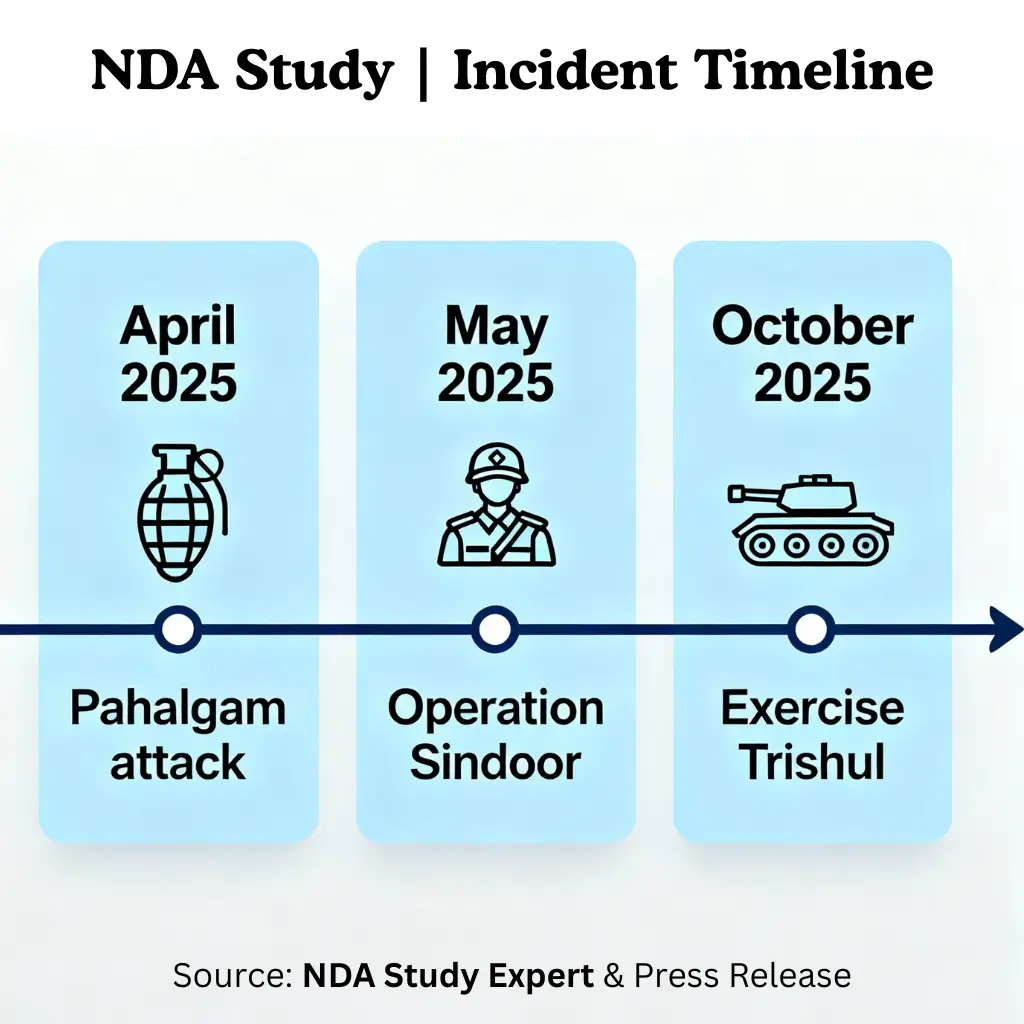
April 22, 2025: Pakistan-based terrorists attack Pahalgam in Jammu and Kashmir, killing 26 civilians, including women and children. The massacre, carried out by Lashkar-e-Taiba operatives, sparks national outrage in India.
April 23-May 6, 2025: Intelligence agencies track the terrorists’ handlers to camps in Pakistan and Pakistan-occupied Kashmir. Political leadership authorises military action. Armed Forces prepare for Operation Sindoor while diplomatic efforts continue.
May 7-10, 2025: Operation Sindoor executed. Indian Armed Forces conduct precision strikes against nine terror camps and 11 Pakistani airbases/radar installations. Pakistan responds with limited retaliatory strikes. Four-day conflict brings nuclear tensions to forefront before ceasefire agreed via DGMO hotline with US mediation.
May 10, 2025: Ceasefire takes effect. Both countries withdraw forces from high alert status but maintain elevated operational readiness. India imposes flight restrictions over Pakistani airspace, cutting air links.
May-September 2025: Periodic skirmishes along the Line of Control. Pakistan continues to deny involvement in the Pahalgam attack while India maintains economic and diplomatic pressure. Ceasefire largely holds but tensions remain high.
October 3, 2025: Defence Minister Rajnath Singh issues warning about Sir Creek during Dussehra address at Bhuj, declaring India will “change both history and geography” if Pakistan acts in Sir Creek sector.
October 7-20, 2025: Intelligence inputs suggest Pakistan increasing military infrastructure near Sir Creek. Pakistan Navy inducts new hovercrafts and reinforces coastal defenses.
October 20, 2025: Southern Command announces Exercise Trishul, a tri-services drill to validate joint operations capabilities.
October 24, 2025: India issues NOTAM for Exercise Trishul, October 30-November 10, restricting airspace up to 28,000 feet over Rajasthan and Gujarat.
October 24-25, 2025: Pakistan Navy Chief Admiral Naveed Ashraf visits Sir Creek forward posts, inducting three 2400 TD hovercrafts and declaring readiness to “defend every inch from Sir Creek to Jiwani.”
October 28-29, 2025: Pakistan issues its own NOTAM restricting central and southern airspace, placing military commands on high alert.
October 30, 2025: Exercise Trishul commences with desert warfare drills by 21 Corps in Rajasthan, amphibious operations off the Saurashtra coast, and IAF Mahagurjar high-tempo air operations.
October 30-November 10, 2025: Twelve days of intensive tri-services exercises demonstrating joint operational capabilities, testing indigenous weapons systems, and sending deterrence signals to Pakistan.
What This Means for NDA Aspirants and Defence Enthusiasts
For those preparing for the National Defence Academy (NDA) exam or pursuing careers in defence services, Exercise Trishul offers valuable insights:
Current Affairs Relevance
Exercise Trishul represents one of 2025’s most significant defence developments. Expect questions in NDA, CDS, and AFCAT exams covering:
- Exercise Trishul’s dates, location, and participating services
- Code names: Trishul (overall), Mahagurjar (IAF), Trinetra (EW/counter-drone), Agni Drishti (network-centric ISR)
- Indigenous weapons systems deployed: Akash, BrahMos, Nagastra-I, Akashteer
- Sir Creek dispute geography and strategic significance
- Comparison with Operation Sindoor and Operation Balakot
- 21 Corps (Sudarshan Chakra Corps) location and role
- PM Modi’s JAI vision: Jointness, Atmanirbharta, Innovation
SSB Interview Preparation
Services Selection Board interviews often probe current defence topics. Be prepared to discuss:
- Your views on India-Pakistan tensions and conflict management
- The balance between military deterrence and diplomatic restraint
- Indigenous defence manufacturing and Atmanirbhar Bharat
- The role of tri-services integration and Theatre Commands
- Technology in modern warfare: drones, electronic warfare, cyber operations
- Civil-military relations and the role of political leadership in defence decisions
Understanding Military Doctrine
Exercise Trishul provides practical insight into concepts frequently tested in defence exams:
Cold Start Doctrine: Rapid mobilisation and offensive operations within 48-72 hours
Integrated Battle Groups: Self-contained combined arms formations for independent operations
Theatre Commands: Unified command structures combining all three services
Network-Centric Warfare: Sensor-to-shooter grids enabled by real-time data sharing
Amphibious Operations: Coordinated land, sea, and air operations to establish beachheads
Counter-Drone Warfare: Detecting, tracking, and neutralising unmanned aerial threats
Electromagnetic Spectrum Operations: Offensive and defensive use of radar, communications, and electronic warfare
Geopolitical Awareness
Understanding Exercise Trishul requires broader geopolitical knowledge:
- India-Pakistan relations history: 1947, 1965, 1971, 1999 conflicts
- Kashmir dispute and cross-border terrorism
- China-Pakistan “all-weather friendship” and CPEC
- US role in South Asian security
- Nuclear deterrence and escalation management
- India’s Act East/Act Indo-Pacific strategies
FAQs: Exercise Trishul 2025 Explained
1: What is Exercise Trishul, and when is it being conducted?
Exercise Trishul is India’s largest tri-services military drill being conducted from October 30 to November 10, 2025, along the western border with Pakistan near the Sir Creek region, involving over 20,000 troops from the Army, Navy, and Air Force.
2: Why is India conducting Exercise Trishul near the Pakistan border?
The exercise aims to demonstrate India’s joint operational capabilities, test indigenous defense systems under the Atmanirbharta initiative, and validate readiness following Operation Sindoor in May 2025. It also serves as a deterrence signal to Pakistan after the Pahalgam terror attack.
3: What is the significance of Sir Creek in this exercise?
Sir Creek is a disputed 96-kilometre maritime zone between India and Pakistan with strategic importance for naval operations, access to Karachi, and potential oil and gas reserves. Defence Minister Rajnath Singh warned that the “route to Karachi goes through Sir Creek.”
4: How does Exercise Trishul compare to Operation Sindoor?
Operation Sindoor (May 2025) was a punitive military strike against terror camps in Pakistan following the Pahalgam attack. Exercise Trishul is a large-scale training drill conducted months later to validate tri-services coordination and sustained operational preparedness.
5: What military assets are deployed in Exercise Trishul?
The exercise involves T-90 Bhishma and Arjun main battle tanks, Rafale and Sukhoi-30MKI fighter jets, IL-78 aerial refuelers, AEW&C aircraft, naval frigates and destroyers, attack helicopters, and indigenous weapons like Akash air defence missiles and BrahMos cruise missiles.
6: What is the NOTAM issued for Exercise Trishul?
India issued a Notice to Airmen (NOTAM) restricting airspace up to 28,000 feet over Rajasthan and Gujarat from October 30 to November 10, 2025. Pakistan responded with its own NOTAM for October 28-29 over central and southern regions.
7: How did Pakistan react to Exercise Trishul?
Pakistan restricted airspace over central and southern regions on October 28-29, placed military commands on high alert, and mobilised Air Force and Navy units. Pakistan Navy Chief Admiral Naveed Ashraf visited Sir Creek forward posts and inducted new hovercrafts on October 24-25.
8: What is the JAI vision being tested in Exercise Trishul?
JAI stands for Jointness, Atmanirbharta (self-reliance), and Innovation – PM Modi’s vision for the Indian Armed Forces. The exercise tests inter-service coordination, indigenous weapons systems, and advanced warfare concepts like AI-enabled targeting and network-centric operations.
9: What exercises are part of the larger Trishul operation?
Exercise Trishul includes specialized drills: Agni Drishti (network-centric ISR integration), Trinetra (electromagnetic spectrum operations and counter-drone warfare), Sudarshan Vayu Sanchar (joint air defense), and Mahagurjar (IAF high-tempo air operations).
10: How many troops are participating in Exercise Trishul?
Over 20,000 troops from the Army, Navy, and Air Force are participating, supported by main battle tanks, artillery systems, fighter jets, warships, attack helicopters, and advanced missile systems.
11: What is the connection between Exercise Trishul and the Pahalgam attack?
The Pahalgam terror attack on April 22, 2025, killed 26 civilians, triggering Operation Sindoor in May 2025. Exercise Trishul is part of India’s continued military readiness and deterrence posture against Pakistan-based terrorism following these events.
12: Will Exercise Trishul lead to conflict with Pakistan?
India has stated Exercise Trishul is a routine training drill, not an aggressive action. However, it signals sustained operational readiness and serves as strategic messaging following the May 2025 ceasefire, demonstrating India’s capability to conduct large-scale operations if required.
13: What is 21 Corps (Sudarshan Chakra Corps)?
The 21 Corps, headquartered in Bhopal, is one of India’s three offensive strike corps under Southern Command. It specialises in rapid mobilisation and desert warfare operations, playing a central role in Exercise Trishul’s ground operations.
14: What are Integrated Battle Groups (IBGs)?
IBGs are self-contained combined arms formations of 5,000-8,000 troops with organic armour, artillery, air defence, and logistics. Exercise Trishul tests IBG concepts as part of the Indian Army’s restructuring for agile, rapid offensive operations.
15: How does Exercise Trishul contribute to Atmanirbhar Bharat?
The exercise prominently features indigenous weapons systems, including Akash missiles, BrahMos cruise missiles, Nagastra-I loitering munitions, DRDO Netra AEW&C aircraft, and Rudra/Prachand helicopters, validating India’s self-reliance in defense manufacturing.
A New Era of Indian Military Capability
Exercise Trishul 2025 represents far more than a routine military drill. It marks a watershed moment in India’s defense evolution – the transition from reactive force posture to proactive deterrence, from import dependence to indigenous capability, and from service-centric operations to genuine jointness.
The exercise sends multiple messages simultaneously. To Pakistan, it demonstrates that India’s operational readiness exemplified during Operation Sindoor was not a one-time mobilization but a sustained capability that can be activated rapidly and repeatedly. The focus on Sir Creek signals strategic flexibility, forcing Pakistan to defend vulnerable southern sectors rather than concentrating on traditional flashpoints.
To the international community, Exercise Trishul showcases a mature military power comfortable with transparency about its capabilities, confident in its indigenous defense industry, and committed to responsible use of force within defined strategic parameters. India’s ability to conduct such large-scale exercises while maintaining economic growth and diplomatic engagement demonstrates the maturity of its national security apparatus.
For India’s defense establishment, Exercise Trishul validates concepts that will shape military organization for decades – Theatre Commands, Integrated Battle Groups, network-centric warfare, and seamless tri-services integration. The emphasis on electromagnetic warfare and counter-drone operations reflects recognition that future conflicts will be won through technology mastery as much as kinetic firepower.
As Exercise Trishul unfolds over these twelve days from October 30 to November 10, 2025, thousands of Indian soldiers, sailors, and airmen are not just practicing military maneuvers – they are writing the next chapter of India’s defense story. Whether this impressive display of capability succeeds in its ultimate objective – deterring Pakistan from supporting terrorism without requiring these weapons to be used in anger – only time will tell.
What is certain is that Exercise Trishul has irrevocably changed the strategic calculus in South Asia. The days when Pakistan could sponsor terrorism confident that India’s military response would be limited to diplomatic protests and surgical strikes are over. India has demonstrated both the capability and the political will to conduct extensive military operations, and Exercise Trishul ensures that capability remains sharp and ready.
For defence enthusiasts, NDA aspirants, and strategic affairs observers, Exercise Trishul offers a master class in modern military operations, strategic signaling, and the integration of indigenous technology into operational doctrine. Study it closely – you are witnessing the evolution of one of the world’s most capable militaries, and these lessons will resonate far beyond India’s western border.

